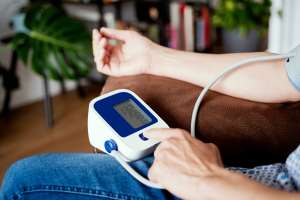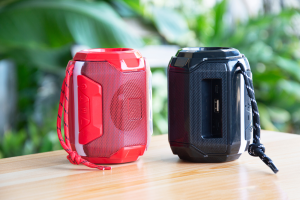
In today's tech-driven world, portable devices are everywhere. From the smartwatch on your wrist to the handheld oscilloscope in an engineer's toolkit, these gadgets have become indispensable.
But here's the thing.
All this portability comes with a power predicament.
Did you know that in the UK, the portable electronics market is expected to reach £15.9 billion in 2023?
That's a lot of devices, each with its own power demands.
Whether it's a medical device that needs to run for an entire shift or an environmental sensor that must operate for months in the field, the challenge remains the same.
How do we squeeze out every last drop of performance without leaving users high and dry?
As product designers, we're constantly walking a tightrope. On one side, we have the need for powerful, feature-packed devices. On the other, the ever-present demand for longer battery life. It's like trying to fill an Olympic-sized swimming pool with a garden hose.
Every drop counts.
So, what's eating up all that precious battery life? Let's break it down:
Understanding these power demands is crucial.
It's not just about making the battery bigger. It's about smart design choices that balance functionality with efficiency. After all, a portable device isn't very portable if you need to lug around a car battery to power it!

When it comes to batteries, it's not one-size-fits-all. Different devices have different needs:
In the UK, the battery market for portable electronics is projected to grow at a CAGR of 7.5% from 2021 to 2026. This growth is driven by increasing demand across various sectors, from consumer electronics to industrial equipment.
Power Management Integrated Circuits (PMICs) are the traffic cops of the electronics world. They direct power where it's needed and cut it off where it's not. Modern PMICs can improve overall system efficiency by up to 30%!
In a portable ultrasound device, for example, a sophisticated PMIC might manage multiple power domains, ensuring that the high-power components (like the transducer) only draw current when needed, while keeping low-power elements (like the display) running efficiently.
Choosing between linear and switching regulators isn't just an academic exercise - it can make or break your power budget.

Energy harvesting is like finding spare change in your sofa cushions. Every little bit helps. It's particularly exciting for IoT and remote sensing applications:
Poorly optimised software can increase power consumption by up to 30%. That's like leaving a third of your battery on the table!
For microcontroller-based devices, efficient firmware is crucial. Consider this pseudocode for a battery-powered sensor node:
while (1) {
if (measurement_due()) {
wake_sensors();
take_measurement();
transmit_data();
sleep_sensors();
}
enter_deep_sleep();
}
This simple loop ensures the device spends most of its time in a low-power state, only waking when necessary.
Heat isn't just uncomfortable - it's inefficient. For every 10°C increase in operating temperature, the failure rate of electronic components roughly doubles.
In a rugged handheld device designed for field use, passive cooling solutions like heat spreaders and carefully designed enclosures can help maintain optimal operating temperatures without adding the weight and power drain of active cooling systems.
The quest for better power management isn't slowing down:

Balancing performance and battery life in portable devices is no small feat. It requires a holistic approach, considering everything from component selection to software optimisation.
Remember, in the UK, 73% of adults say battery life is a key factor when choosing a new portable device.
As designers, it's our job to meet that expectation without compromising on the features and performance that make these devices indispensable.
So, the next time you're designing a portable device, whether it's a consumer gadget or a piece of specialised equipment, think of it as an efficiency puzzle. Every component, every line of code, every design decision is a piece of that puzzle.
Get it right, and you'll have a device that not only performs well but keeps on performing long after the competition has run out of juice.
Now, isn't that a powerful thought!